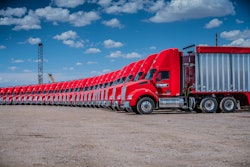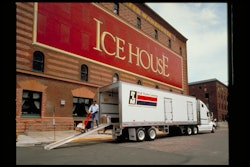
Editors Note: The following article is brought to you by PLM Trailer Leasing in partnership with the Supply Chain Network.
When it comes to finding customer solutions, one size doesn’t fit all. PLM’s approach is unique in the marketplace and starts by taking the time to methodically and holistically evaluate each individual customer and their specific requirements. Let’s find out what that looks like…
Q: How do you describe the PLM approach?
A: Our approach is to look at a customer’s situation holistically to fully evaluate how we can save them time and money. At PLM, we talk about personalized lifecycle management. We start by looking at each company individually to determine the best solution for them. Then, we look at key areas of the fleet to determine how we can increase productivity, reduce business risk, manage the operation of the fleet, as well as the overall budget.
We ask a lot of questions. For instance, how are they financing their equipment? What’s their access to capital? Do they have a replacement strategy? How long do they intend to keep the equipment? It really comes down to three areas: understanding their entire fleet operations; looking at the customer’s access to capital and how they manage it; and determining if they have a cycling process.
Q: What are some of the considerations that PLM looks at when walking customers through the leasing versus buying equation?
A: First, we start by truly understanding our customers and their specific requirements for serving their own customers. We look at application, design and how they are maintaining the equipment.
For example, we use hours and miles to measure how fast customers are “using” the asset. Some customers have light usage while others are very heavy users of assets. Also, we ask how long the customer expects to use the asset—for a couple years, or for a longer term? If they are a heavy user, then their operating costs for the asset is going to increase dramatically over time and they will also incur longer periods of down time. If they’re transporting time- and temp-sensitive products like meat, produce, or pharmaceuticals, they cannot afford to have down time, while service levels can also be impacted.
We also want to know if the equipment is spread out among various locations, or if it’s all coming back to one location each night.
For instance, what kind of information and reporting requirements do they have, i.e. the telematics and temperature tracking requirements?
We also consider driver satisfaction when determining when to cycle an asset—is it five years, six, or seven years? Then we can accurately create a program that meets the needs of that customer.
Q: Is there a scenario when leasing isn’t the right answer for a customer?
A: Yes, sometimes we go through the entire evaluation process and determine that owning the asset is the best option. For example, this can happen when customers have extremely low usage of the asset and take very good care of the trailers. Most times, however, customers will decide that doing a fleet management program with us is the best option.
Q: How do you help customers understand the costs associated with end-of-life decisions for assets?
A: We use modeling and analytics to establish and quantify a time and/or dollar savings for the customer, which is fundamental for them to make the right decision. Some of the questions we look at include, who in their organization does the assessment of each asset in terms of repair costs? How much would it cost to repair the asset, or is it better to sell it? What is the cost of having the asset simply sit in the yard? What are the depreciation costs, financing costs, the costs of hiring a broker to manage the sale of the asset?
Once a customer goes through this extensive exercise to quantify all the costs, the easier it is for them to appreciate the value of our core leasing product, which allows them to simply return the asset back to us when they’re ready, then we deliver a new one.
Q: What are the differences between a short-term and a long-term leasing program?
A: For starters, anything less than one year is considered a rental, and rentals are best suited for seasonal demand or other short-term needs. However, if a contract is more than one year, that’s defined as a lease.
PLM maintains equipment throughout our U.S. network. We can look at the customer’s needs and provide an asset for a short- or long-term need from our available fleet.
Let’s say they’ve just acquired a new customer or piece of business, and they need to scale up their operation immediately, this is one example.
A long-term lease is typically for customers looking to expand their business or using the equipment 100% for their company fleet operations. We’ve worked with them on the assessment to determine their needs; we order the equipment through the factory; and the assets are dedicated to the customer 100 percent. The lease term could be five, six or more years.



















